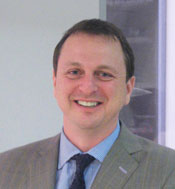Three architects at established firms share how they land new projects when work is scarce.
|
SHoP Architects
Gregg Pasquarelli
William Bostwick: Did you have to reposition the SHoP brand when the recession hit?
Gregg Pasquarelli: It wasn’t about repositioning ourselves. SHoP has always had a broad idea of the way architecture could be practiced. We’re not just a design studio—we’ve always ventured into other areas of business.
WB: Where are those opportunities now? I know you’ve dabbled in real estate development with the Porter House condos in Manhattan. What else?
GP: We’ve been doing real estate for about a decade. We realized that diversification was a smart strategy. We knew boom wasn’t going to last forever and we were going to take advantage of things we were interested in. We have SHoP Construction [founded in 2008], which advises on BIM and other cutting-edge technologies. And this fall we started a company called G. Works, which is a one-stop-shop for landowners and building owners trying to turn buildings green. We do an assessment, show proposals, and give you a menu of options, and then do the building.
WB: A menu of items—that’s a lot like what some smaller firms are doing to market themselves to a new, unfamiliar audience.
GP: It’s a way to expand our reach to people who want to do the right thing and make their buildings more sustainable but just don’t know how to go about it.
WB: Did you take the slow-down as an opportunity to do more creative work, now that you had more time and fewer projects to work on?
GP: From the architecture side, we didn’t lose many projects, but a lot of big projects went on hold. We were an 85-person firm but we lost 18 in the fall of 2008. With several projects on hold, we had the time to work really hard to understand the technical, political, and financial elements surrounding each of those spaces.
WB: You’re coming out of the recession in a big way, with the Atlantic Yards commission in Brooklyn.
GP: In fact, we’d been working on many projects of that scale, but they hadn’t gone public before everything was put on hold. Now the good thing is those projects have started to come back. We’ve actually starting to hire again.


Post a comment to this article
Report Abusive Comment